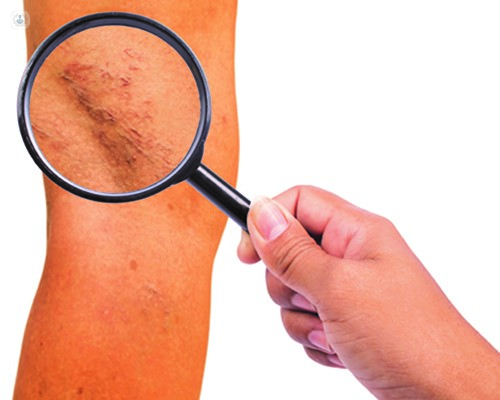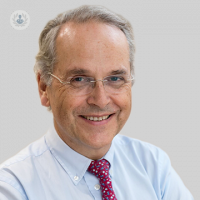Varicose veins: what causes them and how can they be treated?
Written in association with:Veins become varicose veins when their valves fail, and blood can flow the wrong way towards the feet rather than towards the heart. This results in increased pressures in the veins near the ankle. In this article, highly-revered vascular surgeon Mr Philip Coleridge Smith discusses the condition, sharing his expertise. The London-based surgeon outlines the causes, symptoms, diagnosis, and treatment options.

What are varicose veins?
Blood moves from the heart to the extremities through the arteries, veins carry blood back to the heart. Veins contain one-way valves, which prevent blood from travelling in the wrong direction, and channel blood back to the heart. If an obstruction occurs in the veins or if they are under prolonged pressure, the valves become stretched and don’t close correctly. As a result, blood will flow towards the feet. The veins in the legs that are near the surface of the skin enlarge and result in what is commonly called varicose veins. They vary in appearance from minor dilations to large, lumpy veins in the calf.
What are the symptoms?
Feelings of fatigue, heaviness, burning, throbbing, itching, and cramps in the legs can occur as a result of varicose veins. It’s common for the ankles to swell, particularly after standing for many hours. In some cases, the varicose veins can cause troublesome aching.
Are varicose veins a dangerous condition?
Varicose veins are not a danger but can cause aching and discomfort in the legs. Occasionally, tender lumps called phlebitis to appear or the skin may be affected by a range of conditions, such as eczema or leg ulceration. However, these problems usually resolve when varicose veins are treated.
What are the symptoms?
Feelings of fatigue, heaviness, burning, throbbing, itching, and cramps in the legs can occur as a result of varicose veins. It’s common for the ankles to swell, particularly after standing for many hours. In some cases, the varicose veins can cause troublesome aching.
Are varicose veins a dangerous condition?
Varicose veins are not a danger but can cause aching and discomfort in the legs. Occasionally, tender lumps called phlebitis to appear or the skin may be affected by a range of conditions, such as eczema or leg ulceration. However, these problems usually resolve when varicose veins are treated.
How can you test for varicose veins?
Whilst physical examinations are sufficient to determine the extent of the varicose vein, it isn’t always easy to find from where the issue is arising. This is particularly true in cases of recurring varicose veins following an operation. To determine this, special investigations must be performed, even by the very best surgeons.
The gold standard for venous disease investigation is the colour duplex ultrasound as it is the most informative yet least invasive technique. Ultrasonography can find the source of the issue and even demonstrate deep vein thrombosis thanks to its ability to take pictures of the veins and measure blood flow through the vessels.
How is venous insufficiency treated?
Modern treatment of varicose veins avoids surgery and vein 'stripping'. Instead, we use minimally invasive treatments. These treatments are carried out in a consulting room or treatment room under local anaesthetic. After treatment, you can walk away and continue most activities as usual. Little or no time is required away from work.
These treatments include endovenous laser ablation and radiofrequency ablation which are heating treatments. We also use ultrasound-guided injections of sclerosant foam to destroy veins without surgery.
During radiofrequency ablation and laser ablation, the tube is passed along the vein from the knee or calf towards the groin to treat large varicose veins in the thigh. When the tube is in position, the end of the catheter is heated by electrical or laser energy, destroying the vein.
In foam sclerotherapy, a few needles are placed into the most affected surface vein with a small amount of local anaesthetic. The position of the needles is carefully monitored using ultrasound imaging. The foamed sclerosant is then injected through the needles.
Who is most at risk of developing varicose veins?
Varicose veins occur in about one-quarter of people in Western countries. Both environmental factors and inherited factors are responsible. It seems that a Western diet, containing more fat and sugar than we have evolved to expect, is part of the problem. People who spend a lot of time standing still are at higher risk. Obesity is also a factor. Patients with varicose veins often mention relatives who have varicose veins.
Mr Philip Coleridge Smith is a leading vascular surgeon with over 40 years of experience. If you are interested in booking a consultation with him to further discuss treatment options for varicose veins, you can do so by visiting his Top Doctors profile directly.


